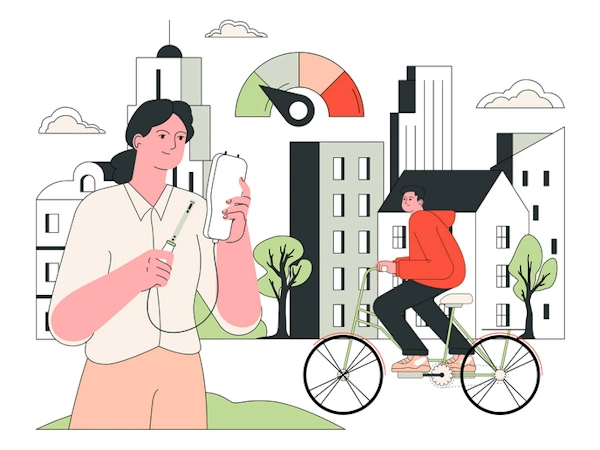An EU-funded initiative is transforming the way cities tackle air pollution by engaging citizens in the collection of high-resolution data on frequently visited spots – neighbourhoods, schools and lesser-known city pockets often missed by official monitoring.
The EU boasts a rich and advanced history in pollution monitoring, offering one of the most advanced and detailed sets of environmental data available. However, there is much room for improvement.
The level of detail in the data sometimes falls short of what is needed for in-depth policy analysis at local level. This challenge arises partly because the distribution of official air pollution monitoring stations is sparse. Therefore, it is hard to achieve a representative coverage of air quality across entire cities, especially when it comes to capturing detailed air quality data at the more granular neighbourhood level.
Furthermore, these stations have traditionally relied on sophisticated and costly stationary equipment for measuring air quality. This approach has required that data collection and maintenance tasks are handled by individuals with specialised scientific background.
Citizen science, which empowers local communities to collect high-resolution data on their environment, could help tackle these challenges. This grassroots approach could aid in providing detailed spatial and temporal insights at neighbourhood level, complementing the broader but less granular data from official municipality sources.
The EU-funded CompAir project harnesses the power of citizen science across diverse urban areas – Athens, Berlin, Flanders, Plovdiv and Sofia. “What sets this initiative apart is its inclusive engagement strategy, bringing together individuals from various social backgrounds – from schoolchildren and the elderly, to cycling enthusiasts and members of the Roma communities,” notes project coordinator Lieven Raes. “These volunteers play a pivotal role in every phase of the citizen science process, from formulating problems and selecting sites to collecting data, analysing findings and spearheading advocacy efforts.”
In citizen science initiatives on air quality, fixed sensor devices are typically employed for measurements. However, “new technologies now allow individuals to track their personal air pollution exposure as they move through different environments daily, such as home, outdoors and work. A hybrid approach combining fixed with portable devices is beginning to emerge,” adds Raes.
Mobile, cost-effective sensors are used by volunteers during the measurement campaigns. The valuable data regarding air quality and traffic is then made accessible to the public through open dashboards and mobile applications, fostering increased environmental awareness.
To ensure the reliability of the data collected by these low-cost devices, researchers have developed a rigorous calibration process. This involves a cloud-based algorithm that compares the readings from these sensors with those from high-grade official stations and other similar devices in the area. The validated data is then shared with public authorities.
COMPAIR has established user-friendly standards and protocols for these low-cost sensors, ensuring that they can be easily used by non-experts. This has empowered citizens across pilot cities to work with peers, and engage actively in discussions to propose policy improvements based on their findings. In Sofia, for example, the project impact has led many parents to opt for municipal buses over personal car journeys to school, showcasing a shift towards more sustainable lifestyle choices.
